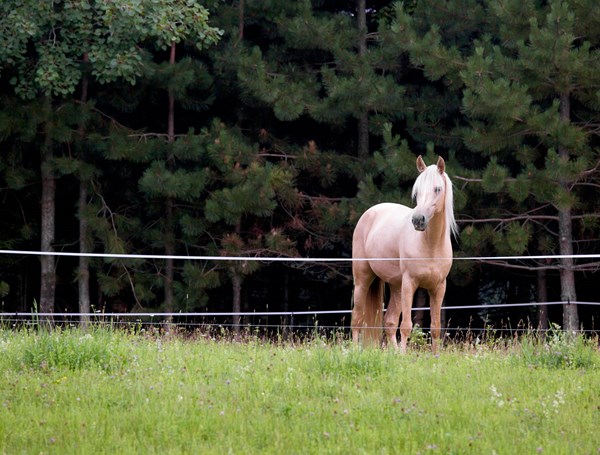 Credit: Thinkstock
Credit: ThinkstockOne of the key ingredients to a flourishing pasture relies on a strong root structure. Strong roots are more resilient to drought and they stabilize the soil and limit erosion. When plants in your pasture are stressed by a lack of water, they are much more adversely affected by horse hooves and overgrazing.
While you may have no control over the weather, you can manage your pastures to minimize compromise to the root structures. One of the best ways to protect your pasture is to recognize that the soils are thirsty before the drought becomes too extensive; proactive strategies minimize damage to the grasses. Only allow horses out on pasture when the grasses have reached a sufficient length to be grazed (6-8 inches). Don’t be in a rush to turn the horses out during a recovery period even if the grass looks green. There needs to be sufficient leaf length for the plants to photosynthesize to sustain and encourage root growth.
Consider rotational grazing by moving horses between pastures to give each area time to recover. You might need to subdivide a large pasture into smaller “paddocks” using electric fencing. When grasses get down to 3-4 inches long, that’s the time to remove the horses from that area. It could take anywhere from 3-8 weeks for grass to recover depending on season and available moisture.
Put aside a sacrifice dry lot area to stable the horses when they aren’t able to go out on pasture. Another technique is to turn horses out for a limited period of time, perhaps no more than a couple of hours each day. This allows them to stretch their legs and consume some tasty green grass, yet gives the plants 22 hours to do what plants do best–photosynthesize and grow.
Picking up the manure regularly is also helpful to improve pasture conditions. Compost the manure to kill parasites and weed seeds. It may be beneficial to mow a field to discourage weed proliferation and to encourage root and leaf growth of the grasses.
Stressed grasses might lack necessary nutrients, so it is important to ensure adequate dietary intake by supplementing with hay. Other forage options used as supplements are usually necessary during drought. This is also particularly important when weeds begin to invade drought-stricken pasture since noxious weeds can create toxic conditions in a horse that consumes them. By providing alternative forage sources, your horses will be less likely to seek out weeds.
It helps to scatter hay in many areas of the turnout pasture so there is access to good food when the pasture pickings are scarce. As the horses roam from hay pile to hay pile, they will get a little exercise, as well. Another method that reduces the impact on pasture grass is to feed hay within the four hours preceding pasture turnout–a full belly makes a horse less inclined to be greedy in his grass consumption.
Fertilizer can be important to give the pasture grasses a jumpstart toward recovery. Soil testing helps to identify what kinds of nutrients need to be replaced in the soil. In dry weather, apply a nitrogen source that can be absorbed when rain isn’t present to soak the fertilizer into the soil. Be cautious of over-fertilizing as this has the potential to be toxic to livestock, including horses. County extension agents can provide good guidance on best fertilization methods.
Don’t forget that it is necessary to re-acclimate horses to green pasture once water is available (rain or irrigation) to re-establish growth of a drought-stricken pasture. Ease them back into the green grass slowly to allow their gastrointestinal tracts time to adjust to feed that is richer than what they’ve been eating.


